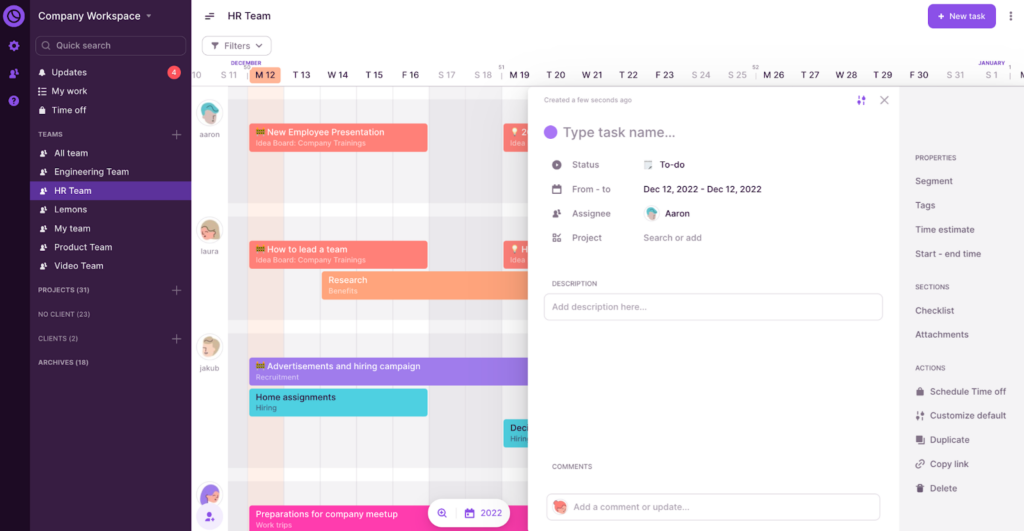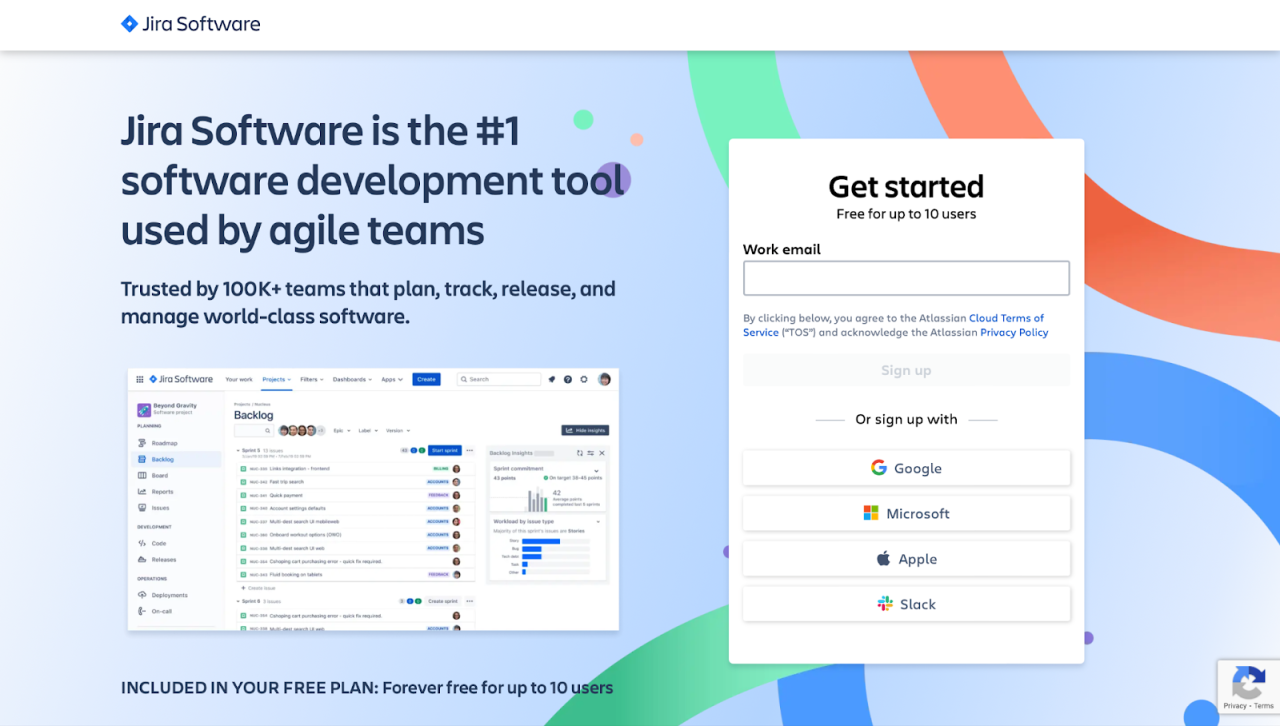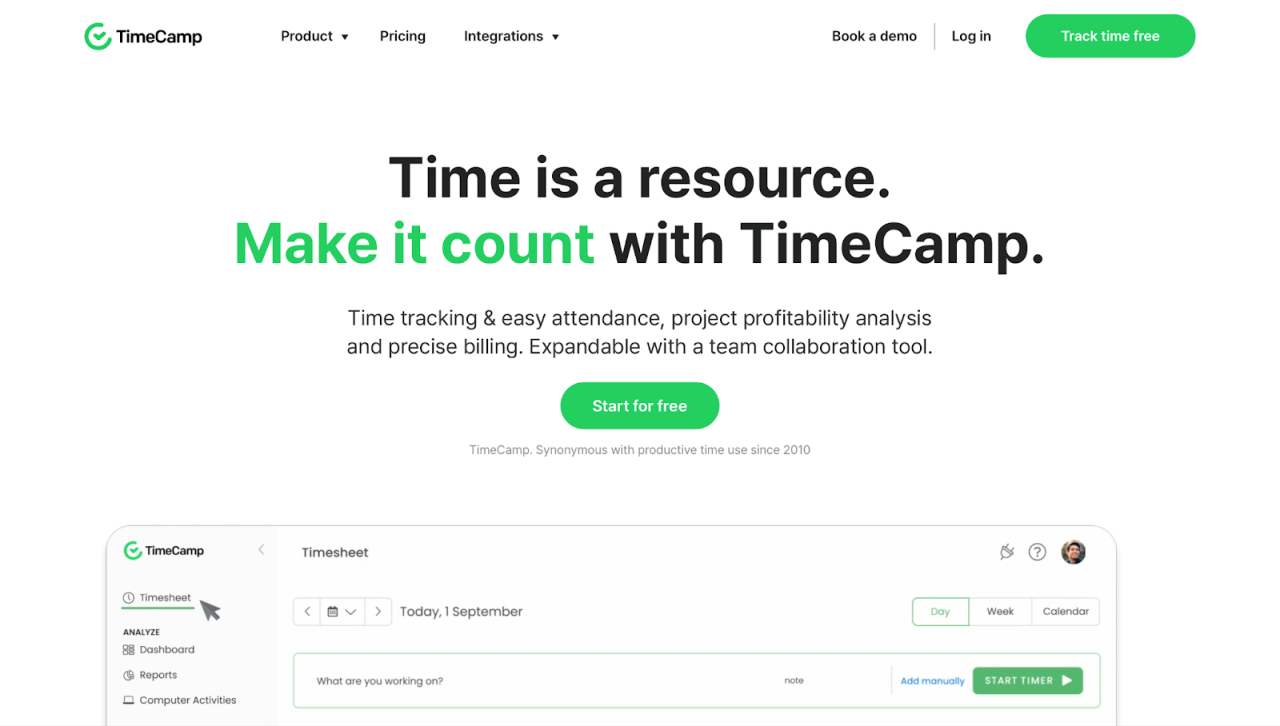Transforming a one-time project into a sustained client relationship requires a strategic approach. This guide explores the essential steps to cultivate lasting partnerships, from initial project assessment to maintaining client satisfaction and measuring performance. Understanding the client’s needs beyond the immediate project is crucial for fostering ongoing engagement.
This comprehensive framework Artikels how to build rapport, identify opportunities for recurring work, create compelling proposals, and manage client expectations effectively. By implementing these strategies, you can transition from a one-off project to a valued, long-term client relationship.
Initial Project Assessment

A successful transition from a one-off project to a long-term client relationship hinges on a thorough initial assessment. This evaluation process allows you to identify potential avenues for future collaboration and tailor your approach to maximize the likelihood of securing ongoing work. Understanding the client’s needs and aligning your services with their long-term objectives are crucial for building a sustainable partnership.
Identifying Potential for Long-Term Relationships
A critical first step is evaluating the project’s inherent potential for ongoing engagement. Consider the complexity of the project, the client’s industry, and the depth of your interaction. Projects involving complex problem-solving, ongoing maintenance, or iterative improvements often offer greater opportunities for long-term partnerships. For instance, a project to optimize a company’s supply chain might be a good starting point for a long-term consulting agreement if you identified key pain points and suggested improvements that went beyond the initial scope.
Key Aspects for Determining Ongoing Work
Assessing the project’s characteristics is paramount. This includes the scope of the project, the client’s resources, and the nature of your deliverables. A well-defined scope with clear expectations, coupled with a client actively engaging in the project, usually indicates a higher potential for future collaboration. Projects that involve ongoing support or require periodic adjustments also offer more opportunities for long-term partnerships.
This could include projects related to software maintenance, training programs, or ongoing strategic advice.
Deliverables Checklist
This checklist helps evaluate the project deliverables from a client-relationship perspective. Thorough documentation and clear communication about deliverables are essential.
- Measurable Outcomes: Are the deliverables quantifiable? Quantifiable outcomes, such as increased efficiency or cost savings, demonstrate tangible value to the client and can easily be leveraged for future proposals.
- Client-Focused Language: Are the deliverables described in terms of benefits to the client, not just technical specifications? For example, instead of “implemented a new database system,” phrase it as “reduced data entry time by 20%.”
- Future Potential: Can the deliverables be expanded upon or adapted for future projects? This demonstrates adaptability and reinforces your value as a partner who can grow alongside the client.
- Scalability: Can the project’s deliverables be scaled or adapted to address additional needs in the future? A modular approach to deliverables is preferable to a monolithic one. This allows for incremental expansion of services as the client’s needs evolve.
Highlighting Deliverable Value
Presenting deliverables in a format that highlights their value to the client is crucial. Organize the deliverables in a way that emphasizes the benefits they bring to the client’s business. This could involve using a visual presentation, such as a flowchart, or a table that clearly displays the benefits of each deliverable. For instance, a table showing how each deliverable directly correlates with key performance indicators (KPIs) is very effective.
Identifying Underlying Needs and Pain Points
Beyond the initial project scope, actively seek to understand the client’s broader needs and pain points. This goes beyond the immediate project requirements and focuses on the client’s strategic objectives. A deeper understanding will reveal opportunities for future collaboration and demonstrate your commitment to the client’s long-term success.
- In-depth Conversations: Engage in detailed conversations with the client to understand their business challenges, industry trends, and future aspirations. Don’t just ask about the project; ask about the overall business strategy and what the client hopes to achieve.
- Industry Research: Stay updated on industry trends and challenges to anticipate potential future needs and proactively offer solutions. This proactive approach shows your commitment to the client’s success beyond the immediate project.
- Future-Oriented Questions: Pose forward-looking questions to understand the client’s long-term goals and how your services can support them. For instance, ask “What are your plans for growth in the next 3-5 years?”
Building Rapport and Trust

Building rapport and trust with a client is crucial for transforming a one-off project into a long-term partnership. This stage goes beyond simply completing the initial project; it focuses on fostering a positive relationship that encourages future collaborations. Establishing trust and understanding client needs are key elements in achieving this goal.Understanding a client’s needs and motivations is essential to building a lasting relationship.
Proactive communication, active listening, and demonstrating a genuine interest in their success are fundamental in cultivating rapport and trust. This goes beyond technical proficiency and encompasses interpersonal skills.
Strategies for Building Rapport During the Project
A key aspect of fostering rapport during the project is consistent communication. This includes regular check-ins to discuss progress, address any concerns, and gather feedback. Open and honest dialogue creates an environment where the client feels valued and understood. Furthermore, actively seeking the client’s input throughout the project demonstrates respect for their perspective and ensures alignment with their vision.
Methods for Establishing Trust and Credibility Beyond Project Deliverables
Trust extends beyond the immediate project deliverables. Demonstrating reliability and professionalism in all interactions, even after the project is completed, builds credibility and fosters trust. Proactively offering support and assistance after the project, such as sharing relevant industry resources or insights, positions your company as a valuable partner. Maintaining consistent communication channels and responding promptly to inquiries reinforces a sense of reliability.
Questions to Understand Client Long-Term Goals and Objectives
To understand a client’s long-term goals, asking insightful questions about their business strategy, future plans, and evolving needs is essential. These questions should encourage the client to articulate their vision and aspirations. For example, inquiring about their long-term strategic objectives, key performance indicators, and anticipated growth plans allows you to understand their vision and identify potential opportunities for future collaborations.
Anticipating and Addressing Potential Client Concerns
Anticipating potential concerns and proactively addressing them demonstrates a proactive and client-focused approach. By identifying potential roadblocks or challenges related to the project or future collaborations, you can address them before they escalate. This includes considering potential budget constraints, timeline variations, or unforeseen technical issues and preparing solutions. Regularly reviewing the project scope and deliverables with the client, confirming understanding and alignment, can preempt potential conflicts.
Communication Techniques for a Positive Client Experience
Effective communication is crucial for fostering a positive client experience. Active listening and empathy are vital in understanding the client’s perspective and concerns. Clearly outlining project timelines, responsibilities, and expectations helps prevent misunderstandings. Transparent and consistent communication, using clear and concise language, builds trust and fosters a collaborative environment. Using appropriate communication channels, such as email, phone calls, or video conferencing, ensures efficiency and clarity in conveying information.
Identifying Potential for Recurring Work
Successfully transitioning a one-off project into a long-term client relationship hinges on identifying opportunities for future collaborations. Proactive identification of these opportunities demonstrates value beyond the initial project, fostering trust and paving the way for a sustained partnership. This section details strategies for identifying recurring work, suggesting supplementary services, and positioning your offerings for future growth.
Methods for Identifying Recurring Work Opportunities
Recognizing potential for recurring work requires a proactive approach. Analyze the client’s needs, project scope, and overall business objectives to pinpoint areas where your services can be instrumental in their ongoing success. A crucial element is understanding the client’s current workflow and pain points. These insights can unveil hidden opportunities for recurring support.
- Review project deliverables: Examine the completed project’s outputs to identify potential gaps or areas where additional support might be beneficial. For instance, if the project involved developing a marketing campaign, subsequent support for campaign optimization or ongoing performance monitoring could be suggested.
- Explore related services: Evaluate services that complement the initial project. If the project focused on website development, consider offering ongoing website maintenance, optimization, or content creation services.
- Analyze client’s business goals: Understanding the client’s overarching business objectives allows you to align your services with their future needs. For example, if a client aims to expand their market reach, your services in digital marketing or market research can prove invaluable.
- Proactively seek feedback: After project completion, actively solicit feedback from the client. This provides valuable insights into their satisfaction, challenges, and future requirements.
Suggesting Additional Services
Presenting supplementary services requires careful consideration of the client’s needs and the alignment of those needs with your expertise. A well-structured proposal that highlights value adds and quantifiable benefits is essential. The goal is to demonstrate how these additional services will contribute to their bottom line.
- Tailor recommendations to specific needs: Instead of generic suggestions, present tailored recommendations that directly address the client’s unique challenges. This demonstrates a deep understanding of their business and a proactive approach to problem-solving.
- Highlight quantifiable benefits: Quantify the value proposition of additional services. For instance, if suggesting ongoing social media management, demonstrate how this can lead to increased engagement or a higher return on investment.
- Present a clear value proposition: Clearly articulate how the additional services will benefit the client. Focus on the return on investment (ROI) and demonstrate how the services align with their business objectives.
Follow-up Service Proposal Template
A structured template for proposing follow-up services can streamline the process and enhance clarity.
| Section | Content |
|---|---|
| Introduction | Briefly summarize the initial project and express appreciation for the client’s business. |
| Review of Initial Project | Highlight key achievements and positive outcomes. |
| Identification of Future Needs | Identify potential future needs based on the initial project’s results, and the client’s business objectives. |
| Proposed Follow-up Services | Clearly Artikel the proposed follow-up services, highlighting their benefits and quantifiable value. |
| Timeline and Costs | Provide a clear timeline for the services and their associated costs. |
| Call to Action | Request a meeting or discussion to explore the possibilities further. |
Areas of Client Business Growth
Analyzing potential areas for client growth allows you to offer services that directly address their expansion plans.
- Market expansion: Assess the potential for expanding into new markets. Offer services that can support market research, product development, or market entry strategies.
- Process optimization: Suggest services that can improve efficiency and streamline existing business processes. Consider solutions like workflow management, automation, or project management tools.
- Customer relationship management (CRM): If the project involved customer interaction, offer services that can improve customer relations and loyalty, like CRM implementation or customer service support.
Presenting Recurring Work Opportunities
Several approaches can be utilized to present opportunities for recurring work. The key is to tailor the approach to the specific client and the context of the initial project.
- Direct approach: Clearly articulate the potential for recurring work based on the project’s outcomes. This method is effective when the client’s needs are clearly evident.
- Value-added approach: Focus on the long-term value of ongoing support and highlight how it contributes to the client’s overall success.
- Collaborative approach: Actively involve the client in discussions about future needs and solicit their input. This fosters a collaborative partnership and demonstrates respect for their expertise.
Creating a Proposal for Future Engagement
A successful one-off project often paves the way for a long-term client relationship. To cultivate this, a well-structured proposal outlining potential recurring services is crucial. This document should clearly articulate the value proposition of ongoing engagement, demonstrating the benefits of support and maintenance beyond the initial project.This section details the process of creating a proposal for future engagement, emphasizing the importance of tailoring the proposal to the specific needs and goals of the client.
It will also cover pricing strategies and examples of service packages.
Proposal Template for Recurring Services
A comprehensive proposal for recurring services should mirror the structure of a successful initial project proposal. Crucially, it needs to Artikel the scope of work for the recurring engagement, specifying deliverables, timelines, and key performance indicators (KPIs). It should also clearly detail the proposed services and their frequency. Include specific examples of tasks, deliverables, and reporting mechanisms.
This demonstrates transparency and reinforces client trust.
Pricing Structure for Recurring Services
A clear pricing structure is vital for a recurring service proposal. This structure should reflect the value of ongoing support and maintenance, and should consider factors such as the scope of services, frequency of engagement, and client needs.
- Tiered Pricing Model: A tiered pricing model can be effectively implemented, offering various packages based on service levels and project complexity. This provides flexibility for clients seeking different levels of support.
- Value-Based Pricing: Instead of simply listing hourly rates, a value-based pricing approach emphasizes the long-term benefits for the client. Highlight how ongoing support translates to reduced risks, improved efficiency, and increased ROI.
- Contractual Agreements: For recurring engagements, a well-defined contract outlining the terms, deliverables, and payment schedule is essential. A clear statement of work (SOW) should be included, outlining all aspects of the recurring agreement.
Value Propositions for Long-Term Contracts
Demonstrate the enduring value of long-term contracts by focusing on how ongoing support translates into enhanced outcomes. Highlight areas where the client can expect increased productivity, improved efficiency, and minimized risk through ongoing engagement.
- Reduced Risks: Highlight how proactive support reduces the likelihood of unexpected issues and costly delays. Explain how ongoing maintenance prevents future problems from escalating.
- Improved Efficiency: Explain how ongoing support and optimization streamline processes and improve operational efficiency. Showcase how this leads to greater cost savings and faster time-to-market for the client.
- Increased ROI: Quantify the potential return on investment (ROI) of ongoing support. Provide examples of how previous clients have benefited from ongoing maintenance and support.
Highlighting Benefits of Ongoing Support and Maintenance
The proposal should emphasize the advantages of ongoing support and maintenance. This demonstrates a proactive approach to client needs, building a stronger and more sustainable relationship.
- Proactive Problem Solving: Explain how ongoing support involves proactively identifying and addressing potential issues before they impact the client’s operations.
- Enhanced Security and Reliability: Demonstrate how ongoing maintenance ensures the system’s continued security and reliability, minimizing downtime and security risks.
- Future-Proofing: Showcase how ongoing support ensures the system remains adaptable to future needs and technological advancements.
Service Packages for Diverse Needs
To cater to various client needs, propose different service packages with varying levels of support and maintenance.
| Service Package | Description | Pricing |
|---|---|---|
| Basic Support | Monthly check-ins, basic troubleshooting, and minor updates. | $XXX/month |
| Premium Support | Monthly check-ins, comprehensive troubleshooting, and priority support for critical issues. | $YYY/month |
| Enterprise Support | Dedicated account manager, advanced troubleshooting, and proactive maintenance. | $ZZZ/month |
Maintaining Client Satisfaction

Cultivating a strong and lasting client relationship hinges on consistent satisfaction and loyalty. This requires proactive measures to anticipate needs, address concerns swiftly, and foster a partnership built on mutual respect and understanding. A satisfied client is a returning client, a valuable asset for long-term business growth.Maintaining client satisfaction is an ongoing process that requires commitment and attention to detail.
It involves more than just delivering a quality product or service; it’s about building a relationship characterized by trust, communication, and proactive problem-solving. Excellent customer service is paramount in fostering a positive and enduring client relationship.
Methods for Maintaining Client Satisfaction and Loyalty
Consistent communication, clear expectations, and proactive problem-solving are essential elements for nurturing a lasting client relationship. A well-defined communication strategy ensures both parties are informed and aligned. Transparency and open dialogue foster trust, reducing the likelihood of misunderstandings.
- Proactive Communication: Regularly scheduled check-ins, updates on project progress, and open channels for feedback foster a sense of partnership. This can include email updates, project status reports, and phone calls, tailored to the client’s preferred communication style.
- Anticipating Needs: Understanding the client’s business goals, challenges, and priorities allows for proactive solutions. This may involve suggesting supplementary services or tools to enhance their outcomes.
- Personalized Service: Recognizing individual client preferences and adapting communication styles enhances the experience and builds rapport. This includes tailoring communication to each client’s personality and preferred methods.
Best Practices for Providing Excellent Customer Service
Excellent customer service is the cornerstone of client satisfaction. It involves not only meeting expectations but exceeding them. Active listening, empathy, and a focus on solutions are key components.
- Active Listening: Carefully listening to client concerns and suggestions demonstrates respect and understanding. Taking detailed notes during discussions ensures all points are addressed.
- Empathetic Responses: Responding with empathy and understanding, even during challenging situations, demonstrates concern for the client’s needs and strengthens the relationship. Acknowledging and validating their concerns, even if you can’t immediately solve them, builds trust.
- Focus on Solutions: Frame every interaction around finding solutions, not just identifying problems. This positive approach demonstrates a commitment to the client’s success and fosters a sense of partnership.
Importance of Consistent Communication and Feedback Loops
Regular communication and feedback mechanisms are crucial for maintaining client satisfaction. This involves establishing clear communication protocols and actively soliciting feedback to identify areas for improvement.
- Establish Communication Protocols: Clearly define the communication channels, frequency, and expected response times. This ensures transparency and predictability for the client.
- Implement Feedback Mechanisms: Use surveys, feedback forms, or dedicated channels for collecting client feedback. Regularly review and address feedback to demonstrate responsiveness and commitment to improvement.
Framework for Ongoing Project Management and Support
A structured project management approach ensures efficient project execution and ongoing client support. This framework includes clearly defined roles, responsibilities, and procedures.
- Defined Project Phases: Artikel clear project phases with specific milestones and deliverables. This provides transparency and allows for continuous monitoring and adjustments.
- Regular Progress Reporting: Provide regular updates on project progress, highlighting achievements and addressing any roadblocks proactively.
- Dedicated Support Channels: Establish dedicated channels for client support, such as email, phone, or a dedicated support portal, to facilitate prompt responses and resolution of issues.
Importance of Proactive Problem-Solving and Responsiveness
Proactive problem-solving and swift responsiveness demonstrate a commitment to the client’s success. Anticipating potential issues and addressing them before they escalate is crucial.
- Identify Potential Issues: Anticipate potential challenges in the project and address them before they negatively impact the client.
- Provide Swift Responses: Respond promptly to client inquiries and concerns, demonstrating a commitment to their needs.
Handling Client Expectations

Setting realistic expectations from the outset is crucial for fostering a successful long-term client relationship. A clear understanding of both your capabilities and the client’s needs prevents misunderstandings and ensures mutual satisfaction throughout the engagement. This proactive approach allows for open communication and collaborative problem-solving, ultimately strengthening the partnership.Effective management of expectations involves a thorough understanding of the client’s perspective, anticipating potential concerns, and proactively addressing them.
Open communication and transparency are key to building trust and maintaining a positive working relationship. This section details how to set realistic expectations, common client concerns, and proactive strategies for effective management.
Realistic Expectations for Ongoing Projects
Setting realistic expectations for ongoing projects is a vital aspect of long-term client management. It necessitates careful consideration of project scope, deliverables, timelines, and resource allocation. A comprehensive understanding of both your capabilities and the client’s needs is crucial for defining realistic and achievable goals. Clearly outlining the expected outcomes and the roles of both parties ensures a shared understanding and prevents potential misinterpretations.
Common Client Concerns Regarding Long-Term Partnerships
Clients often have concerns about long-term partnerships. These concerns can include project scope creep, fluctuating priorities, changing requirements, and inconsistent communication. Additionally, clients may worry about the value proposition of ongoing services and the potential for overspending.
- Project Scope Creep: Unforeseen changes in project requirements can impact timelines and budgets. Clear initial project documentation and agreed-upon change management procedures are essential to mitigate scope creep.
- Fluctuating Priorities: Client priorities might shift over time. Establishing regular communication channels and checkpoints allows for proactive adjustments and ensures that the project remains aligned with evolving needs.
- Changing Requirements: Unforeseen changes in the client’s business needs or technological landscape may require adjustments to the project. A flexible approach and open communication channel allows for adapting to these changes effectively.
- Inconsistent Communication: Regular updates and clear communication channels are essential to maintain a transparent and predictable partnership. This helps to address any potential concerns or questions proactively.
- Value Proposition: Clients want to ensure that the value they receive from ongoing services aligns with the cost. A strong emphasis on demonstrable results and clear value propositions helps maintain client satisfaction.
- Potential for Overspending: Clients need assurance that ongoing projects are not leading to excessive costs. Clear budgeting, transparent pricing models, and regular financial reporting are key to managing client concerns.
Proactive Strategies for Managing Client Expectations
Proactive strategies for managing client expectations involve establishing clear communication channels, setting realistic timelines and deliverables, and providing regular updates. Transparent communication fosters trust and reduces ambiguity, allowing for a collaborative approach to problem-solving.
- Establish Clear Communication Channels: Regular meetings, progress reports, and dedicated communication channels (e.g., project management software) are crucial for keeping the client informed and engaged.
- Set Realistic Timelines and Deliverables: Detailed project plans and agreed-upon timelines are essential to manage expectations and ensure transparency.
- Provide Regular Updates: Regular progress reports, using project management tools and dedicated communication channels, help keep clients informed and engaged.
Examples of Effective Communication
Effective communication regarding project timelines and deliverables in a recurring engagement involves using clear and concise language, providing specific examples, and adhering to established communication protocols. Regular progress reports, highlighting key achievements and any potential roadblocks, are crucial for maintaining transparency and ensuring mutual understanding.
“Instead of saying ‘The project is on track,’ provide specific details such as ‘The initial design phase is complete, and we’ve received positive feedback from the client. We anticipate project completion by [date], with the final deliverable being [deliverable].'”
Process for Addressing Client Feedback and Concerns
A well-defined process for addressing client feedback and concerns is essential for maintaining a positive and productive relationship. This involves actively listening to feedback, acknowledging concerns, and promptly addressing them. Prompt resolution of concerns demonstrates commitment to client satisfaction and helps maintain a strong partnership.
- Actively Listen to Feedback: Create a system where clients feel comfortable sharing their feedback. Be attentive and receptive to their concerns, even if they seem minor.
- Acknowledge Concerns: Acknowledge and validate the client’s concerns, demonstrating empathy and understanding.
- Address Concerns Promptly: Establish a timeline for addressing feedback and concerns. Providing regular updates ensures that clients feel their concerns are being taken seriously.
Measuring and Evaluating Performance
Successfully transitioning a one-off project into a long-term client relationship hinges on consistent performance and client satisfaction. Regular evaluation allows for proactive adjustments and ensures continued value for both parties. This involves more than just meeting deadlines; it encompasses understanding client needs and adapting strategies to maintain a strong, profitable partnership.Measuring performance in recurring engagements requires a systematic approach that tracks both project specifics and the overall client relationship.
This ensures that efforts remain aligned with client expectations and company objectives. Effective monitoring empowers informed decisions, leading to enhanced client satisfaction and sustainable profitability.
Tracking Project Performance and Client Satisfaction
Regular communication and feedback are crucial for maintaining a healthy relationship. Establish clear metrics and benchmarks for project deliverables, ensuring they align with the initial scope and agreed-upon objectives. This allows for a transparent and consistent approach to project management. Tracking progress through milestones and utilizing project management software can provide valuable insights into performance and highlight potential areas for improvement.
Client feedback should be actively solicited through surveys, regular check-ins, and open communication channels.
Evaluating Effectiveness of Strategies
A robust framework for evaluating the effectiveness of different strategies is essential for continuous improvement. This framework should encompass both qualitative and quantitative measures. Qualitative data includes client testimonials, feedback, and observations on project interactions. Quantitative data might involve metrics such as project completion time, cost efficiency, and client satisfaction scores. By analyzing both types of data, companies can identify areas where strategies are performing well and where adjustments are needed.
Regularly evaluating the success of specific strategies allows for informed decisions about future engagements and ensures optimal outcomes.
Key Metrics for Long-Term Client Relationships
Several key metrics can measure the success of long-term client relationships. These include project completion rate, on-time delivery, client retention rate, and the average revenue generated from the client. These metrics provide a comprehensive view of the relationship’s health and profitability. Analyzing these figures can help predict future performance and inform strategic adjustments to maximize value for both the client and the company.
For example, a consistently high client retention rate often signifies strong relationship management and successful project execution.
Client Feedback Template for Ongoing Projects
A structured template for gathering client feedback ensures consistency and allows for actionable insights. This template should include open-ended questions to solicit detailed feedback and quantitative scales to measure satisfaction levels on key aspects of the engagement, such as communication, responsiveness, and project management. The template should also include a mechanism for addressing concerns or issues promptly.
Evaluating Profitability of Long-Term Clients
Assessing the profitability of long-term clients requires a comprehensive approach. This involves analyzing the initial project cost, the total revenue generated, and any associated expenses throughout the engagement. Using financial modeling tools can project future revenue streams and analyze the return on investment (ROI) for each client. Tracking these factors helps in understanding the long-term value proposition of each client relationship.
For instance, a client that consistently exceeds expectations and generates higher-than-anticipated revenue represents a significant asset.
Final Thoughts

In conclusion, nurturing a long-term client relationship is a process that requires careful planning and consistent effort. By thoroughly assessing initial projects, building strong rapport, identifying recurring opportunities, creating professional proposals, maintaining client satisfaction, handling expectations, and measuring performance, you can effectively cultivate lasting client partnerships. This proactive approach positions you for continued success and profitability.